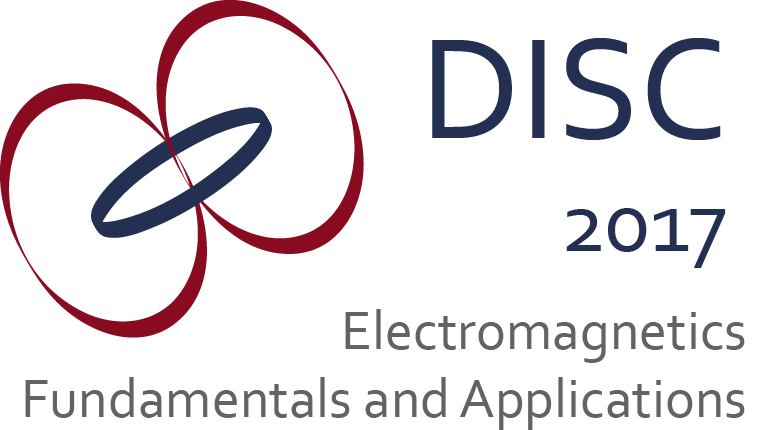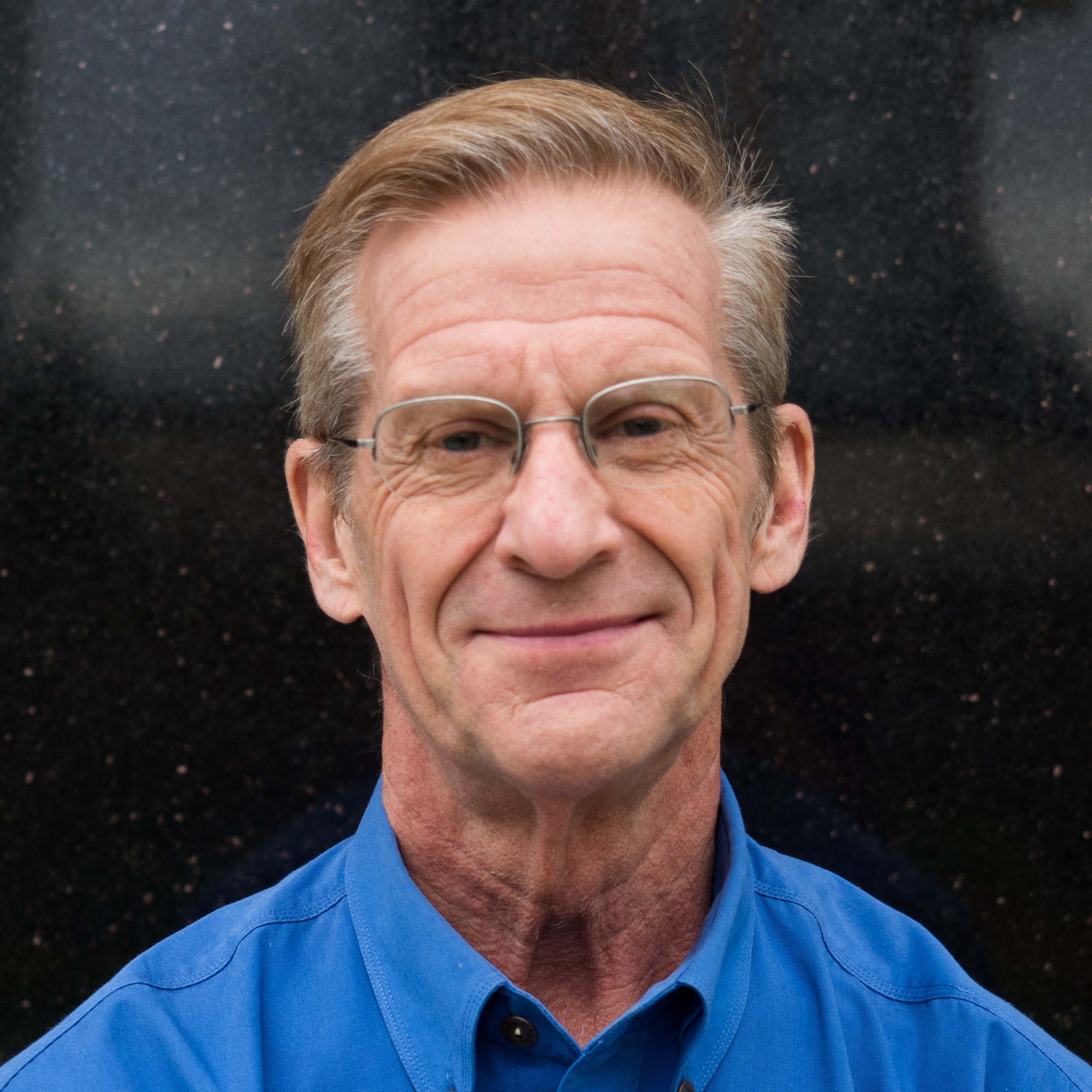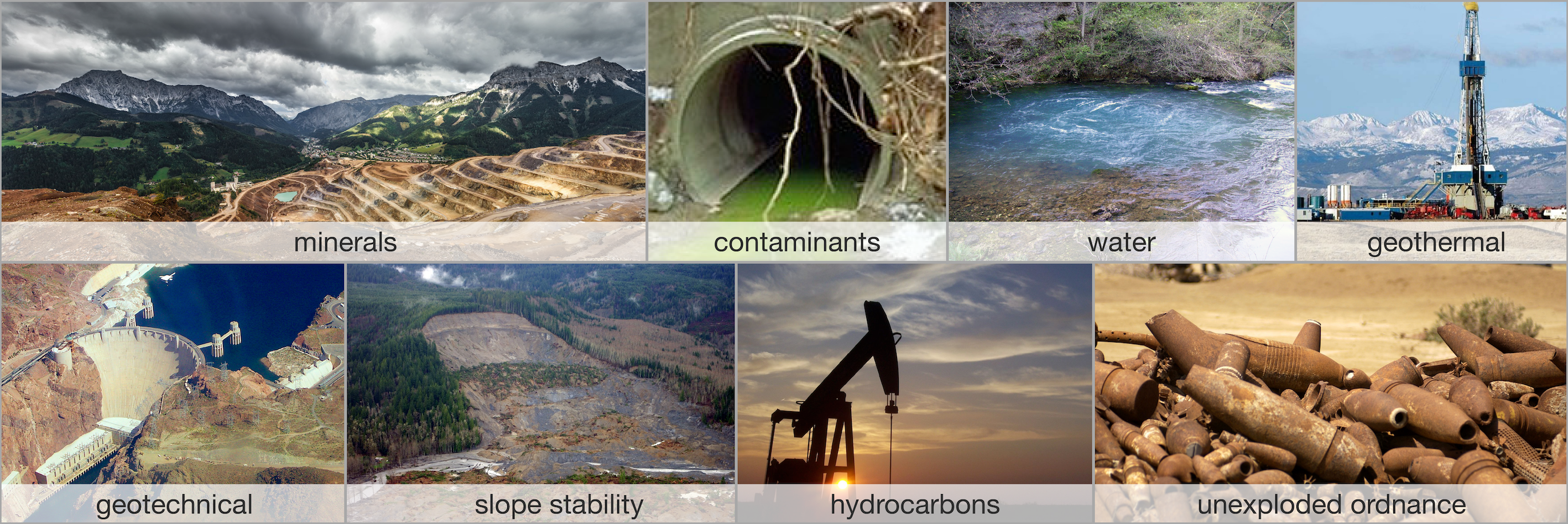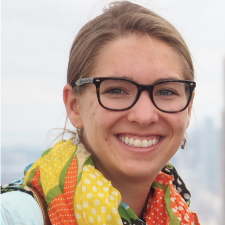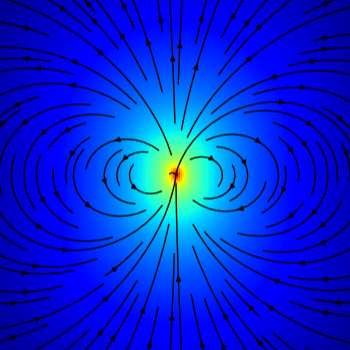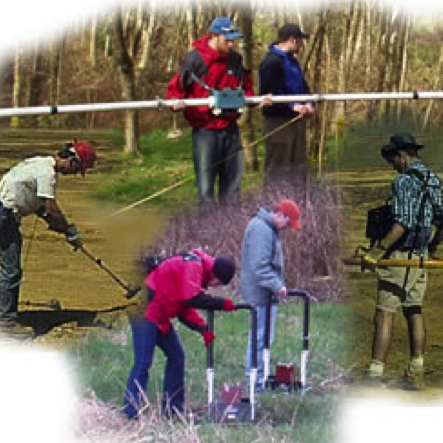Although we work continually with Maxwell’s
electromagnetic equations, the presentations
are mathematically “light” and the learning
aspect is facilitated by the use of Jupyter
notebooks. These provide an interactive
computing environment in which you can ask
questions and explore concepts. As an example,
you are invited to use the Electric Dipole
Notebook that allows you to explore the EM
fields for an electric dipole in a cross-well
survey using frequencies that range from DC to
those used in a radar survey.
The case histories pertain to problems in resource
exploration, environmental, and geotechnical
areas and are contributed by experts worldwide. We
successively look at surveys that make use of
steady state fields (DC resistivity, IP, MMR), and
then move on to FDEM (frequency domain) and then
to TDEM (time domain). The energy sources for
these surveys are both man made and natural. The
latter allows us to explore MT and ZTEM surveys.
The various surveys can be carried out in the air,
on the earth’s surface or underground and the case
history determines which survey is selected. The
choice of case histories and surveys to focus on
depends upon the location at which the DISC is
presented and the problems that are of general
interest to that location. This is why we are
requesting locally generated case histories.
It is not possible to cover all of EM geophysics
in a single day but attendees will obtain new
insight about EM fundamentals and applications.
The DISC, and the associated open source
resources, can then act as a catalyst to develop a
community that can share information, interact on
EM problems of mutual interest, and elevate the
use of EM geophysics to solve applied problems.
For more, see the Interview with Doug.
